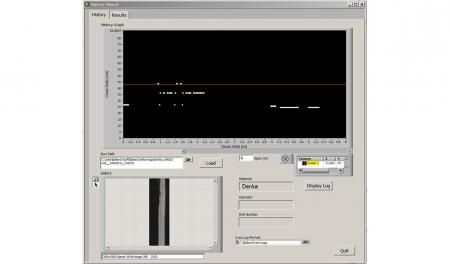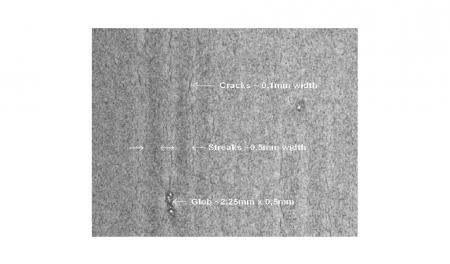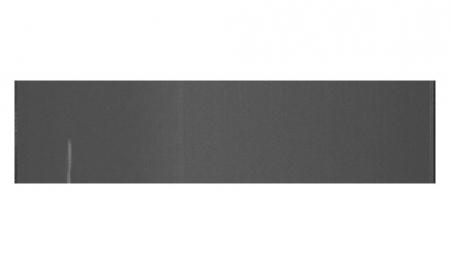Customer
AvCarb, LLC, formerly Ballard Material Products, is a premium supplier of the gas diffusion layer (GDL) material, a critical component of the membrane electrode assembly used in a wide variety of hydrogen fuel cells.
Challenge
The US Department of Energy (DOE) endeavors to reduce the fabrication costs and improve the quality of high-performance GDL products via Award Number DE-FG36-08GO18051. One of the most labor-intensive portions of the manufacturing process is the inspection of the GDL web substrate. Human operators manually observe a roll of GDL material rewind, and record any visual defects along with their locations. This is a very slow process, often at speeds between 5-10 meters/minute, and is subject to large discrepancies due to operator experience and opinions on what constitutes a defect.
Solution
AvCarb selected Bloomy to integrate an in-line automated defect detection system for the GDL web coating process. Bloomy developed a vision application that automatically detects and logs defects in the roll during the coating operation. The vision system is comprised of an 8192 pixel line scan camera, a series of LED light bars for illuminating the web, a CameraLink PC interface, a rotary encoder, and image processing software developed in LabVIEW. The operator first captures a defect-free image that is used as the template for threshold comparison. The process coats the roll while the rotary encoder digitally triggers the acquisition of images from the camera. The software inspects the GDL web images, performs an online comparison of the live images with the template, and records the image, location, and classification of every defect. Vignetting from the camera lens is removed by normalizing the acquired images with the template image, allowing the detection of both bright and dark defects across the full web area. Defects are classified by length and area, allowing differentiation between streaks, blobs, lumps, cracks, scrapes, and globs using defect length configuration settings.
Features
- High resolution line scan camera, NI CameraLink interface, and LabVIEW software
- Detects light and dark defects as small as 0.0017 in2
- Handles varying web width of different GDL products ranging from 2.875 to 33.46 inches without adjustment
- Synchronizes image capture with web traversal at variable web speeds
- Classifies defects as streaks, blobs, lumps, cracks, scrapes, and globs
- Automatically records image, classification, and location of defects
- Facilitates offline analysis, including interactive panning and scrolling a History Graph to view defects; and click any defect to view image, classification, and location details
Results
The automated inspection system has dramatically improved the capability and efficiency of detecting real-time GDL material defects, including very small defects that were previously undetectable by the human operator. The system provides a full map of defect sizes, locations, and classifications in real-time allowing operators to make adjustments and improve GDL quality during the coating operation. This process, along with other process improvements, has helped to reduce GDL manufacturing costs by more than 50%, including a four-fold increase in production capacity. The system provides valuable insight into the GDL manufacturing process that improves quality and prevents defects prior to the final inspection. As a result of the overall program, Ballard received a prestigious Annual Merit Review Award from the DOE recognizing its success in reducing manufacturing cost. For complete description of the findings and improvements, please refer to the Final Technical Report for Reduction in Fabrication Costs of Gas Diffusion Layers (DE-FG36-08GO18051).
Testimonial
“The vision system developed by Bloomy allows us to find and track defects on our coating line in real-time, allowing us to make corrections and reduce defects during the process so that the total number of defects at final inspection is dramatically reduced. Additionally, the increased speed and accuracy significantly reduces the cost required for inspecting the GDL on the substrate level and provides critical feedback to the manufacturing team.”
-Jason Morgan
AvCarb



